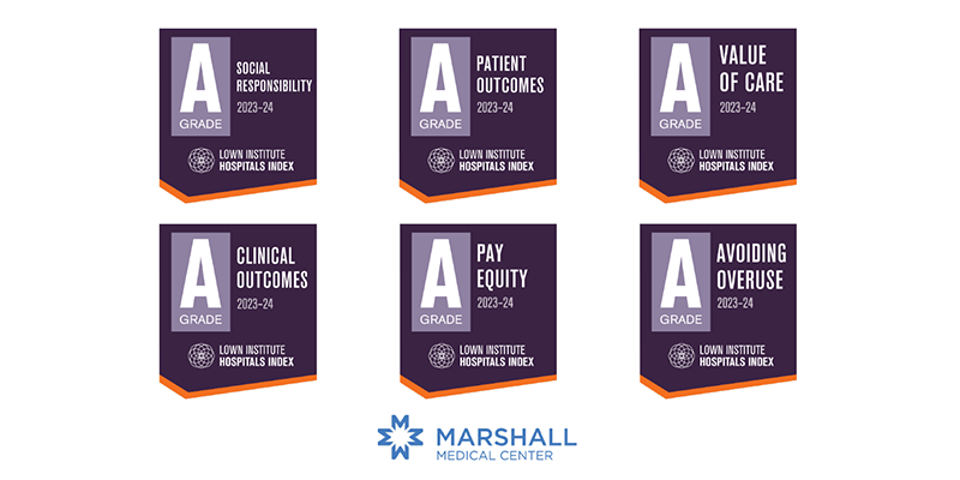- Patients & Visitors
- Community Information
- Educational Resources
- Black Box Warnings

Black Box Warnings
Stay Informed on Medication Side Effects
Black box warnings (BBW) are the strictest warning labels used when labeling medication. In the BBW, you will find a list of hazards and side effects that could have serious, even life-threatening consequences if ignored. Even medications prescribed by your doctor can be dangerous if taken incorrectly. Below you will find a few black box warnings for medications hospital patients commonly take. For BBWs and precautions for other drugs please visit this website: Lexicomp Online.
Arixtra / Lovenox
Spinal/Epidural hematomas: Patients anticoagulated with low molecular weight heparins (LMWHs) or fondaparinux are at risk of developing an epidural or spinal hematoma that can result in long-term or permanent paralysis when neuraxial anesthesia or spinal puncture is employed.
Frequently monitor patients for signs and symptoms of neurological impairment. If neurologic compromise is noted, urgent treatment is necessary.
Warfarin
Warfarin can cause major or fatal bleeding and is more likely to occur during the starting period and with a higher dose. Regular monitoring of INR should be performed on all treated patients and careful dose adjustment to desired INR. Consider employing the pharmacist warfarin dosing service for assistance.
Fentanyl Transdermal Patches
Fentanyl transdermal systems contain a high concentration of fentanyl which has a high potential for abuse and an associated risk of fatal overdose caused by respiratory depression. Only use fentanyl transdermal system in patients who are opioid tolerant. Patients who are considered opioid tolerant are those who have been taking, for a week or longer, morphine 60 mg/day or more, or oral oxycodone 30 mg/day or more, or oral hydromorphone 8 mg/day or more, or an equianalgesic dose of another opioid.
Fentanyl transdermal is Contraindicated in patients who are not opioid tolerant, in the management of acute or mild pain, in the management of acute or postoperative pain or intermittent pain responsive to as needed or non-opioid therapy, or in doses exceeding 25mcg/h at the initiation or opioid therapy. Peak fentanyl levels occur between 24 and 72 hours of treatment. Note that serious or life-threatening hypoventilation may occur, even in opioid-tolerant patients, during the initial application period.
Furosemide
Furosemide is a potent diuretic and given in excessive amounts, can lead to a profound diuresis with water and electrolyte depletion. Careful supervision is required and dosing must be adjusted to individual patients’ needs.
Morphine
Astramorph PF, Infumorph, Duramorph: Because of the risk of severe adverse effects when the epidural or intrathecal route of administration is employed, patients must be observed in a fully equipped and staffed environment for at least 24 hours after the initial dose.
Infliximab
Patients treated with infliximab are at increased risk for infections, including progression to serious infections leading to death. These have included bacterial sepsis, tuberculosis (TB), and invasive fungal, and other opportunistic infections. Evaluate patient for TB risk factors and test for latent TB prior to initiating and during therapy.
Promethazine
Do not use promethazine in children younger than 2 years of age because of the potential for fatal respiratory depression. Use caution when administering promethazine to children 2 years of age or older by using the lowest effective dose and avoiding concomitant administration of other drugs with respiratory depressant effects. For all age groups, IM administration is preferred and IV administration is discouraged. IV administration should be at a concentration not to exceed 25 mg/mL and at a rate no greater than 25 mg/min. Avoid subcutaneous and intra-arterial injection because tissue necrosis and gangrene can result as well as with extravasated IV injections. Amputations have resulted.
Epoetin alfa (Epogen)
Renal failure: Patients experienced greater risks for death and serious CV events when administered erythropoiesis-stimulating agents (ESAs) to target higher vs. lower hemoglobin levels. Individualize dosing to achieve and maintain hemoglobin levels within the range of 10 to 12 g/dL.
Cancer: ESAs shortened overall survival and/or increased the risk of tumor progression or recurrence in some clinical studies in patients with breast, non–small cell lung, head and neck, lymphoid, and cervical cancers. To decrease these risks use the lowest dose needed to avoid red blood cell transfusions. Use ESAs only for treatment of anemia caused by concomitant myelosuppressive chemotherapy. Discontinue following the completion of a chemotherapy course.
Perisurgery: Epoetin alfa increased the rate of deep venous thromboses in patients not receiving prophylactic anticoagulation. Consider deep venous thrombosis prophylaxis.
Ketorolac (inject and oral)
Ketorolac is indicated for the short-term (up to 5 days) management of moderately severe acute pain that requires analgesia at the opioid level in adults. It is not indicated for minor or chronic painful conditions. The resulting NSAID-related adverse reactions can be serious in certain patients for whom ketorolac is indicated, especially when the drug is used inappropriately.
- Renal: Contraindicated in patients with renal impairment or at risk for renal failure due to volume depletion.
- Bleeding: Contraindicated as prophylactic analgesic before any major surgery and is Contraindicated intra-operatively when hemostasis is critical due to the increased risk of bleeding.
Special populations: For patients >= 65 years of age, for patients less than 50 kg (110 lbs) of body weight or for patients with moderately elevated serum creatinine the dose should be adjusted to not exceed 60mg/24hrs.
Haloperidol and Other Anti-Psychotics (Typical and Atypical)
An increased incidence of cerebro-vascular adverse events (including fatalities) has been reported in elderly patients with dementia-related psychosis. These drugs are not approved for this indication. When haloperidol is used to treat delirium, continuous EKG monitoring with specific attention to a developing QTc interval prolongation is recommended.
Related Blogs
-
 Marshall Affiliates with UC Davis Health for World-Class Cancer Care
Marshall Affiliates with UC Davis Health for World-Class Cancer Care- Marshall In The News
- Press Release
Marshall and UC Davis Health have announced an affiliation for cancer services that allows Marshall patients access to the renowned UC Davis ...
Read More -
 For Your Health, Spring 2025
For Your Health, Spring 2025- Newsletter
Read More -
 Marshall Nationally Recognized for Exceptional Care
Marshall Nationally Recognized for Exceptional Care- Press Release
Read More -
 Self-Schedule on MyChart
Self-Schedule on MyChart- Press Release
Your convenience is our priority. Log in to your MyChart account and schedule or cancel many types of appointments with ease, with the family and ...
Read More -
 Marshall Earns “A” for Social Responsibility on National Ranking
Marshall Earns “A” for Social Responsibility on National Ranking- Press Release
Read More -
 For Your Health Fall 2022
For Your Health Fall 2022- Newsletter
Click here to read the latest issue of For Your Health.
Read More -
 Marshall CEO Siri Nelson Honored As Woman Of The Year
Marshall CEO Siri Nelson Honored As Woman Of The Year- Press Release
MARSHALL CEO SIRI NELSON HONORED AS WOMAN OF THE YEAR BY CALIFORNIA ASSEMBLYMEMBER JOE PATTERSON California State Assemblymember Joe Patterson has ...
Read More -
 American Cancer Society National Colorectal Cancer Roundtable Honors Marshall for Their Efforts to Increase Colorectal Cancer Screenings
American Cancer Society National Colorectal Cancer Roundtable Honors Marshall for Their Efforts to Increase Colorectal Cancer Screenings- Newsletter
The American Cancer Society National Colorectal Cancer Roundtable (ACS NCCRT), founded in partnership with the Centers for Disease Control and ...
Read More -
 Marshall Named Top Hospital in Patient Safety and Quality Care
Marshall Named Top Hospital in Patient Safety and Quality Care- Marshall In The News
- Press Release
Digital platform Money, in partnership with national watchdog organization The Leapfrog Group, has named Marshall one of 148 top hospitals in the ...
Read More -
 Why Do I Still Have to Wear a Mask in a Hospital?
Why Do I Still Have to Wear a Mask in a Hospital?- Ask the Expert
Just about everywhere you go these days, indoor mask mandates for public spaces have been dropped. In communities like El Dorado County with low rates ...
Read More


